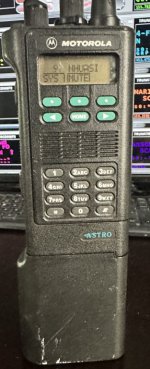Um... what? I joined LAPD in 1977 and we were on VHF with eight channel radios. It was in the early 1980s that we switched to UHF and every officer got assigned a ROVER
I remember the switchover from VHF to UHF (analog) was around the time of the '84 Olympics. The system wasn't fully built out and there were lots of dead spots. LAPD's "X" Division handled the techie stuff. The department went full P-25 later in the 80's ('87 or '88 I think). It was the same day the Lakers had a championship parade.
LAPD never had a VHF repeater system (as we know them), but the dispatch channels on the radios were set up l
ike a repeater channel. I remember reading that Chief Parker was opposed to allowing units direct communication with each other, fearing "loss of control".
ROVER was a clever acronym. It actually stood for
Remote
Out of
Vehicle
Emergency
Radio, and, as handhelds, the radios could "rove" with the officer. In those early ROVER days, I remember hearing on the air check-ins from the officers at the beginning of the shift with their vehicle shop number, shotgun number and ROVER numbers. (There weren't enough radios for everyone to have a take home unit and radios had to be checked out/in each shift). To save money, many LAPD units had ConvertaComs rather than dedicated mobile radios.
In the VHF days, many unmarked ("plain wrap") units had the Antenna Specialists VHF disguise antennas located on the passenger side front cowling where the AM broadcast antenna would normally go. After the UHF switchover, unmarked units either relied on the ROVERS or had the ConvertaCom (or mobile) antenna as a 1/4 wave UHF spike on the inside rear deck behind the back seat. Clever cops would put a Kleenex box or baseball cap over the antenna to further hide it.



